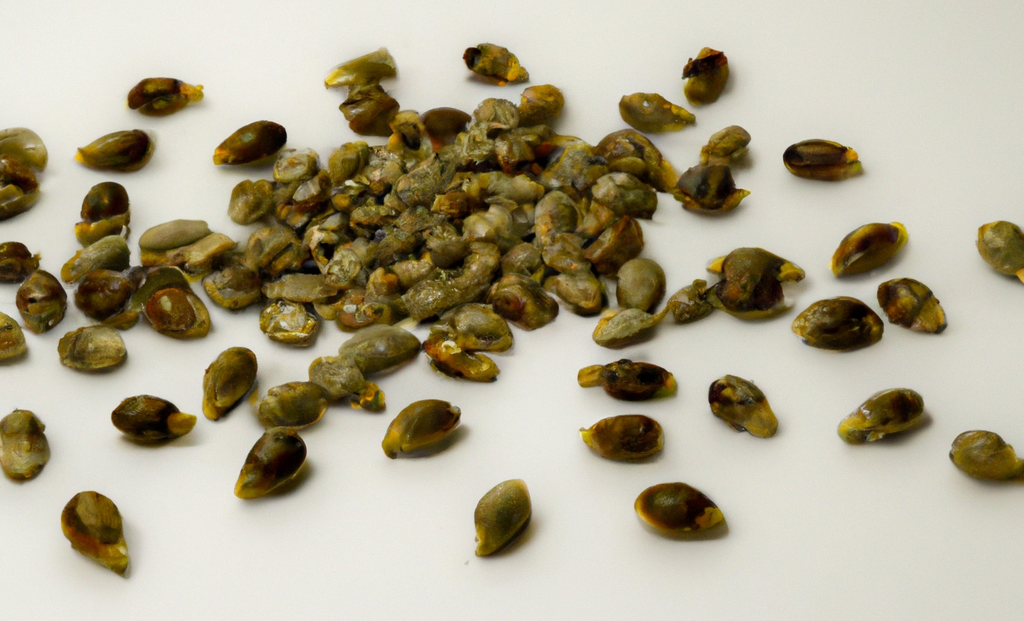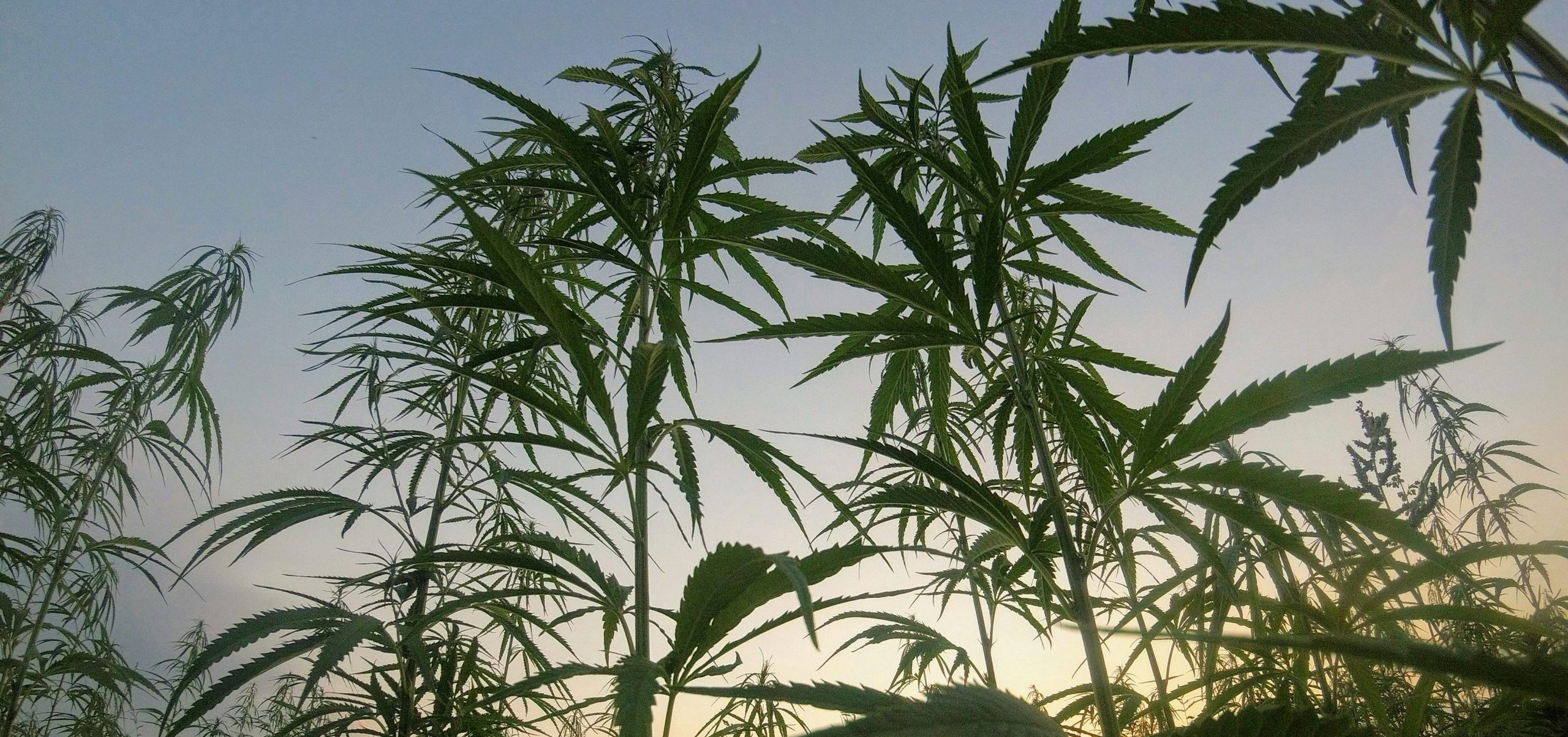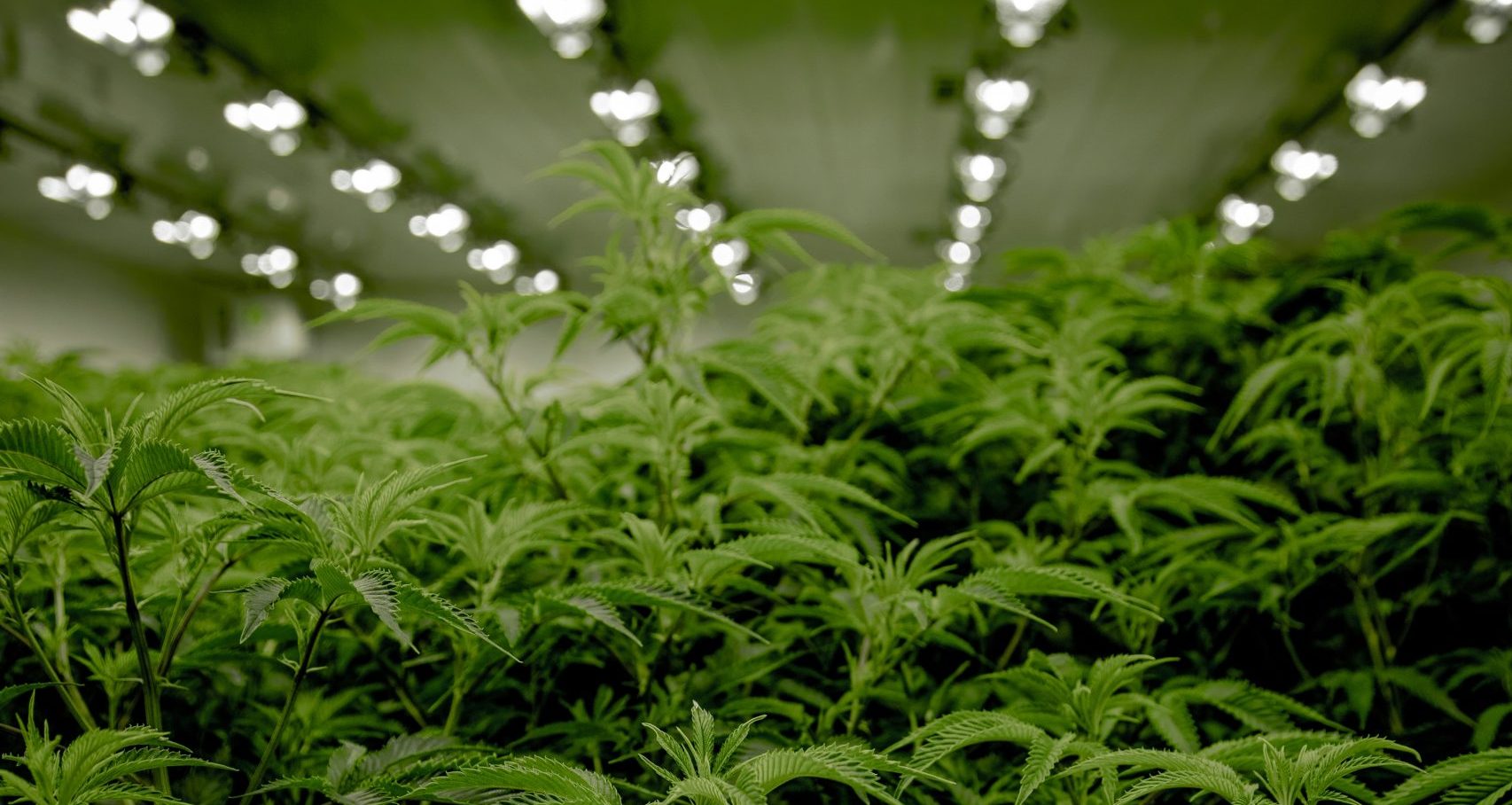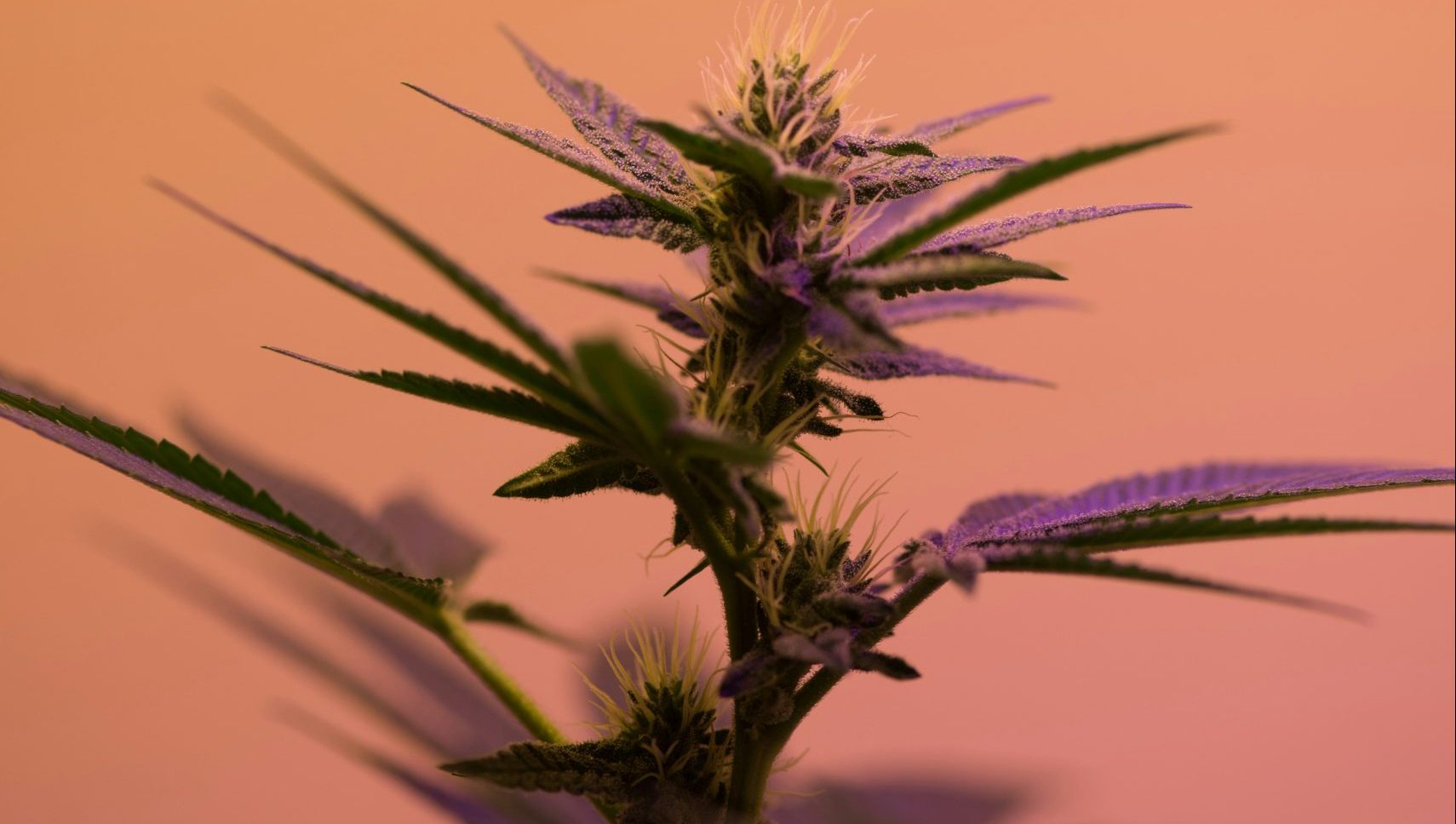The Cannabis hemp seed is a complete source of easily accessible protein. It is available in the form found in human blood plasma, the fluid portion of blood that supplies nutrients to tissues. Hemp oil can be made from the seeds too.
HEMP SEED OIL
A source of valuable essential fatty acids
Interest in Cannabis has largely focused on its content of psychoactive substances (cannabinoids) or its potential industrial use as a source of cellulose fibre. While the whole seed has long been used as a source of food, its potential health contribution has never gained much attention. Hemp seeds have a high content of easily digestible complete protein and a rich oil providing a favorable ratio of the linoleic (C18:2w6) and linolenic (C18:3w3) essential fatty acids required for proper human nutrition, in addition to a significant contribution of gamma-linolenic (C18:3w6) acid of potential therapeutic efficacy.
With a recently acquired knowledge concerning the importance of these fatty acids in the human diet, it is time to both intensify research on their variable occurrence among varieties of hemp seed, and investigate methods of oil extraction and storage suitable for their preservation.
Throughout history and in separate parts of the world, hemp has often been an important plant revered for its psycho activity and useful for medicine, as a source of fibre, and for the food provided by its seed.
The fruit of hemp is not a true seed, but an “achene”, a tiny nut covered by a hard shell. These are consumed whole, used in food and folk medicinal preparations or employed as a feed for birds and fishes. Whole hemp seed contains approximately 20-25% protein, 20-30% carbohydrates and 10-15% insoluble fibre as well as a rich array of minerals, particularly phosphorous, potassium, magnesium, sulfur and calcium, along with modest amounts of iron and zinc the latter of which is an important enzyme co-factor for human fatty acid metabolism.
It is also a fair source of carotene, a “Vitamin A” precursor, and is a potentially important contributor of dietary fibre. Most hemp seed also contains approximately 25-35% oil, although one variety grown in Russia called “olifera” reportedly contains 40% and a Chinese variety was claimed to slightly exceed this figure.
This highly polyunsaturated oil has uses similar to that of linseed oil (e.g., fuel for lighting, printer¢s ink, wood preservative), but also has been employed as a raw material for soaps and detergents and as an emollient in body-care products.
However, it is the nutritional qualities of the oil that are particularly important. The crushed seed by-product is suitable for animal feed as well as a human staple due to its spectrum of amino acids, including all 8 of those essential to the human diet as well as carbohydrates and a small amount of residual oil. Its protein is primarily edestin, an easily assimilated globular protein of a type similar to the albumin found in egg whites and blood. However, heat-treating whole hemp seed denatures this protein and renders it insoluble, possibly affecting digestibility.
An ideal hemp seed variety would produce a high yield of seed (normally 0.5-1.0 t/ha) containing a high percentage of good quality oil. Highly branched varieties are usually preferred. For seed production, male plants are sometimes removed after pollination has occurred, in order to leave more space for female plants. The seed yield can be doubled using monoecious varieties, although this sexual type suffers some inbreeding depression. Cultivation of a monoecious strain in Switzerland yielded up to approximately 1.5 metric tons of seed per hectare in but lower yields are generally reported. Highest seed yields are obtainable with unisex female varieties, such as Uniko-B. The number of flowers per plant and, therefore, the quantity of seed produced, can be increased by “topping” the plants when they are 30-50 cm high. Maximum seed yield requires that hemp be sown at a much lower density than for fibre. However, weeds can prosper if planting density is too sparse (e.g., 25/m2 ).
Extraction methods
Extraction of oil from hemp seed is not being carried out on a large scale at the present time. That being processed is sometimes relatively inhomogeneous, mature seeds mixed with green ones. This is due to the difficulty of finding the optimal time for harvesting, since not all seeds reach maturity simultaneously, especially in hemp undeveloped for seed production. The presence of unripe seeds not only increases seed crop moisture content, it also lowers oil yield and modifies its taste.
After harvest, hemp seed undergoes a drying process that reduces its moisture content to 10% or less, so as to prevent sprouting during storage. Batches of this material are then fed into a hydraulic screw press and a pressure of 500 bars is progressively applied, resulting in only a minor elevation in temperature. Best quality oil is obtained from the first fractions recovered. Approximately 35% of the available oil remains in the seed cake. The pressing process is sometimes repeated with this crushed residue to obtain a small additional amount of oil, although quality is decreased.
This “cold pressing” does not allow an extraction yield equal to that of techniques employing solvents or high temperatures, but it has the advantage of minimizing degrading changes in the oil. A small amount of oil is also lost during the subsequent filtration process. Further refining procedures should be avoided in order to preserve the native qualities of this product. Bottling must occur quickly and filling under nitrogen into opaque bottles, then refrigerating, offers significant protection against oil degradation due to oxidation and the action of light, although freezing is necessary for long-term storage. Addition of anti-oxidants extends shelf life of the product at room temperature.
Oil composition and properties
Non-refined hemp seed oil extracted by cold-pressing methods varies from off-yellow to dark green and has a pleasant nutty taste, sometimes accompanied by a touch of bitterness. The seed (and therefore the extracted oil) normally does not contain significant amounts of psychoactive substances. Trace amounts of THC, sometimes found upon analysis, are probably due to contamination of the seed by adherent resin or other plant residues although reports to the contrary exist.
Analytical data reported for the fatty acid composition of hemp seed oil reveals that it is unusually high in polyunsaturated fatty acids (70-80%), while its content in saturated fatty acids (below 10%) compares favorably with the least saturated commonly consumed vegetable oils. This high degree of instauration explains its extreme sensitivity to oxidative rancidity, as the chemical “double-bonds” that provide such instauration are vulnerable to attack by atmospheric oxygen. This degradation is accelerated by heat or light. For this reason, the oil is unsatisfactory for frying or baking, although moderate heat for short periods is probably tolerable. It is best consumed as table oil, on salads or as a butter/margarine substitute for dipping bread, similar in use to olive oil.
Proper steam sterilization of the seed probably does not cause significant damage to the oil, but does destroy the integrity of the seed, allowing penetration by air and molds. If this procedure is required, it should be done at a legally bonded facility immediately before release of the seed for further processing. By the same reasoning, one should avoid eating whole hemp seed that has been subjected to any cooking process, unless reasonably fresh.
The two polyunsaturated essential fatty acids, linoleic acid (C18:2w6) or “LA” and linolenic acid (C18:3w3) or “LNA”, usually account for approximately 50-70% and 15-25% respectively, of the total seed fatty acid content. Such a 3:1 balance has been claimed optimal for human nutrition and is apparently unique among the common plant oils, although black currant seed oil approaches this figure. Cannabis seed from tropical environments seems to lack significant quantities of LNA. Temperate variety oils are less saturated, perhaps due to a natural selection in northern latitudes for oils with a higher energy storage capacity or which remain liquid at a lower temperature. It will be interesting to see if this trend continues for Nordic hemp varieties. The range of results found in some analyses may be attributable to differences in crop ripeness, since formation of polyunsaturated fatty acids is incomplete in immature Cannabis seed. This suggests that a maximum ripening of the seed and the culling of immature seed are important considerations for the production of quality oil. Likewise, proper seed sampling criteria are also crucial for representative analyses.
GLA sources and importance
Gamma-linolenic acid (C18:3w6) or “GLA” is found in minute quantities in most fats of animal origin. Oats and barley also contain small amounts. Human milk contains some GLA, but any significance is probably overshadowed by the greater presence of its metabolic derivative dihomo-gamma-linolenic acid or “DGLA” (C20:3w6).
Hemp seed oil from sterilized seed analyzed in the US contained 1.7% GLA but higher levels (3-6%) have been measured, although it is apparently rare in most tropical varieties of Cannabis. However, absolute amounts of GLA are not the only criteria for ranking the desirability of oil. The arrangement of fatty acids on glycerol, as the natural triglyceride, as well as differences in possible toxicity among the various oils, must be taken into consideration.
The potential physiological effects of GLA have been extensively investigated only recently. In the body, GLA is normally derived from LA and serves as an intermediary for the formation of longer-chain fatty acids and eicosanoids. Eicosanoids are short-lived hormone-like substances which fulfill numerous vital roles, ranging from control of inflammation processes and vascular tone to initiation of contractions during delivery. The metabolic conversion of LA to GLA is slow in mammals. Further, it has been suggested that due to stress, ageing or pathology (e.g., hypertension, diabetes, etc.), formation of a sufficient amount or balance of eicosanoids may be impaired. This problem may be relieved by direct GLA supplementation, although caution is warranted since over consumption could be harmful. Its alleviating action on psoriasis, atopic eczema, and mastalgia are already well documented and GLA preparations are now frequently prescribed for the treatment of the latter two disorders. GLA has also been under investigation for its beneficial effects in cardiovascular, psychiatric and immunological disorders.
If a favorable response to GLA supplementation does not occur, additional application of stearidonic acid (SDA) or use of black currant seed oil may be indicated, since the same enzyme (delta-6-desaturase) that converts LA to GLA is also responsible for converting LNA to SDA. However, relatively few people suffer from a defect in this enzyme compared to the nearly universal lack of adequate LNA levels in the diet. A chronic LNA deficit is best acutely treated with flax seed (fresh linseed) oil, although it is unsuitable for prolonged consumption due to an imbalance in its LA (14%) to LNA (58%) content, a ratio approximately equal, but inverse, to that of hemp.
Future prospects
Questions remain concerning the reasons which have so far prevented a more extensive consumption of hemp seed oil. It is possible that the historically significant uses of hemp (i.e., fibre, medicine, whole seed and psychoactive drug) took priority over its potential utilization as a source of oil. Secondly, many other plant sources of oil have been found more adequate in terms of yield and chemical stability of their oil, and the nutritional value of hemp seed oil was little known. Finally, the relatively recent “anti-drug” ban on hemp cultivation in many countries has prevented food scientists from investigating in more depth the wide range of potential uses for this seed.
Probably no other single source of oil offers a more favorable human dietary balance of the two essential fatty acids, LA and LNA. Even though hemp seed oil contains only relatively small amounts of GLA when compared to more established sources, this is probably sufficient for many of those who cannot efficiently convert LNA to GLA, and helps to prevent GLA over consumption. In addition, because of its ease of cultivation, Cannabis may possess the potential to become an alternative raw material source for the production of isolated forms of GLA as a special dietary supplement.
Much work remains to be undertaken with the existing cultivars, as well as indigenous landraces and feral strains. A major research priority must be the full characterization of oils obtained from diverse hemp sources. There exists considerable potential for development of varieties providing larger yields of seed containing higher oil content with a consistent fatty acid profile. Knowledge of environmental influences on seed quality and the development of improved agricultural methods will also contribute to the future success of this plant. In addition, important questions remain concerning this oil’s psycho-chemical properties, triglyceride structures, and physiological effect, as well as the methods of extraction and storage that are most economical and best suited to preserve its unique nutritional qualities.
Hempseed oil has an omega-6:omega-3 ratio of about 4:1 and the seeds have essential amino acids in ideal proportions. Hempseed contains alpha-Linolenic Acid (18:3 omega-3), gamma-Linolenic Acid (18:3 omega-6) and Linoleic Acid (18:2 omega-6)
Is the sale of hemp oil legal?
Yes. Hemp oil can be legally imported or pressed in Europe, and from imported, sterilized seeds in the USA and for external use only in Australia.
Does hemp oil make you high?
No. The meat of hemp seed does not contain the drug tetrahydrocannabinol (THC), which is the psychoactive substance in cannabis. Minute amounts of THC may be transferred from the flowers surrounding the leaves into the oil during pressing.
However, these trace amounts are, if seeds from low-THC varieties are used and properly cleaned, too low to have any psychoactive effects.
Can hemp oil be used for frying or deep-frying?
Better not. Unrefined hemp oil – just like olive oil – should not be used for high temperature or deep-frying. At high temperatures, unhealthy oxidation and polymerization products are formed from the unsaturated fatty acids. Furthermore, at temperatures approaching 400 F, undesirable trans-fatty acids are gradually formed. Quick sautéing is acceptable, yet care must be taken to keep the oil from smoking.
Flax oil is high in unsaturated essential fatty acids.
What is the benefit of hemp oil?
The ratio of the essential fatty acids (about three parts linoleic acid to one part alpha-linolenic acid) in hemp oil is favourable for the human body because it matches its nutritional requirements. Flax oil, despite its higher essential fatty acid content, has a less favourable ratio (1:5). Flax oil also does not contain gamma-linolenic acid, an unsaturated fatty acid, which is found abundantly in hemp oil.
Have food products from industrial hemp been approved for sale in Australia and New Zealand?
New Zealand has approved hemp oil food products, but not hemp meal. ANZFA recommended that these foodstuffs be approved, (see PDF) but, under Howard, thay said it would send the wrong message about drugs, and refused to ratify the ANZFA standard..
Australia is now the only country where such “novel foods” are unavailable for human consumption, but pet foods are allowed..
If they are approved, will hemp food products require special labelling?
Food ingredients must be declared in the statement of ingredients by the common name of the ingredient or a name that describes the true nature of the ingredient. If hemp is considered to be a characterising ingredient in the food, then the percentage of hemp in the food would also need to be declared.
It is also proposed that foods containing hemp must not be represented in a form that expressly or by implication suggests that the food has any properties associated with illicit drugs.
Are hemp-based products used in food elsewhere in the world?
Everywhere but Australia.






